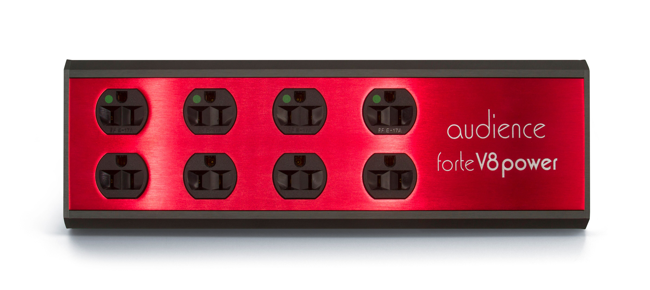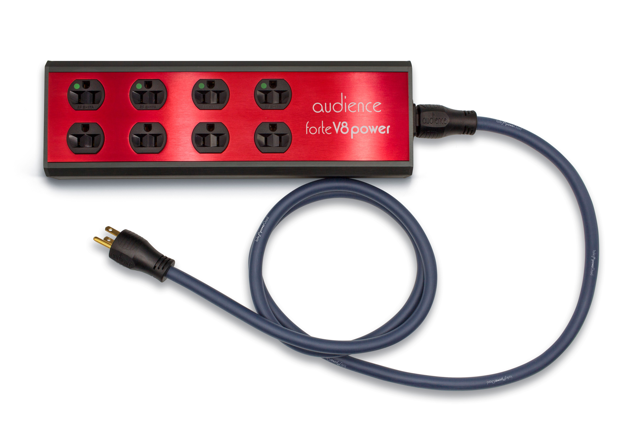
Typically, at some point when I’m writing a review, I feel like I’m a fake. I don’t have an electrical engineering degree, nor do I have a deep understanding of the physics of sound. There are other reviewers out there who really dive into the nitty-gritty technical details of how a product and the technology works. With every piece of equipment that I review, my aim is to learn more about how that equipment actually works.
For this review, I have tried to come to a better understanding of what electrical noise is and how it can be filtered to improve sound quality. Yet, even though I am a layman when it comes to the technical side of our hobby, I believe my evaluation is valid. You want to know why? Because every designer or engineer I have ever spoken with has always eventually said, “Then we listened to it.” Any of us can “listen to it” and add valid input on the sound quality. So now, with the “I’m not an electrical engineer” disclaimer out of the way, here are my listening impressions of the Audience forte V8 Power premium AC platform.
About the forte V8 Power Platform
To start off, physically, the forte V8 Power platform is a beautiful piece of equipment. The rich red color is sensual, the weight is hefty and it doesn’t remind me of a piece of computer or hospital equipment the way some other power strips do. The good looks were somewhat hidden in my listening space, however, as it ended up behind the component rack and out of direct view. So, if you disagree with me on the looks, consider that you might not be looking at it very much.
My only quibble with the physical design of the V8 is that Audience used duplexes. I would have preferred individual outlets that could be flipped with the ground plug and aligned with the corresponding side. But, as I said earlier, I’m not an electrical engineer.
Now, as for what is inside of the forte V8, Audience appears to be keeping a bit tight-lipped, at least as far as more specific details go. I inquired about more specs and technical information, but no more information was forthcoming. The product description says that the V8 is made from an extruded aluminum chassis with a copper busbar design. It houses four duplexes, (for a total of eight individual outlets) which are hospital grade. Each outlet is separately wired to the busbars in a STAR ground configuration with 14 AWG stranded copper wire.
The V8 also includes standard Audience RF filtration. And with no more specifics on that standard, I believe this is where the “secret sauce” is made. The power cord connection is a standard IEC and all parts of the electric circuit have been treated by cryogenics as well as by a proprietary EHVP (extreme high voltage process). And here is something very important that should not be overlooked, the V8 does not include surge or overload protection.
My Experience with the forte V8

I have been lucky to be able to spend a very long time with the V8, and I tested many different configurations of power cords and equipment with it. The tests also included the forte f3 powerChord (retail $249 but currently included with the f8 for no extra charge) Audience sent along for the review. Here is a brief list of some of the configurations I tried:
- The forte f3 powerChord from the wall to the V8 with a variety of PS Audio, WyWires, VooDoo, and some other power cords feeding a Mystère ia11 tube integrated amplifier, or the Orchard Audio CRISPIN class-D amplifier or the Burson HA-160 Soloist headphone amplifier.
- And then also the Apple Pi DAC from Orchard Audio or the Rega P3 and SoundSmith MMP3, all using wall warts, into the V8.
- Or another configuration switching out the Audience forte f3 powerChord to feed an amplifier and one of my power cords from the wall outlet to the V8.
- Or the V8, with or without the forte f3 powering an amplifier and the DAC or vinyl stuff plugged directly into the wall.
- Or an amp into the wall and the DAC or vinyl stuff into the V8.
Then I tested out different orders of things in the V8 itself beginning with the wall warts first and then the amplifier power cords, and so forth. There were a lot of different combinations to try, but as I said earlier, I had the V8 for a long time. The good news is that I think I found where the V8 helped my system the most.
Did the V8 Make a Difference?
Across all configurations, the V8 made the sound quality better, sometimes by a little, and sometimes by a lot. It appeared to offer the most improvement in sound when powering the Orchard Audio DAC, which sits atop a Raspberry Pi computer and uses a very small, and inexpensive power supply and wall wart. The V8 also made great improvements when powering the turntable and phono amp.
Where it made a bit less of improvement was when powering the CRISPIN class-D amplifier, but the improvement was noticeable. It appeared to make the least improvement when powering the Mystère ia11 tube integrated amplifier that has its own three large and heavy power transformers. (Not to digress, but if you have not had a chance to hear a Mystère amplifier, you should do so, especially if your budget is limited. I’ve had mine for nearly 10 years now and I continue to love it.) Anyway, as for the Audience forte f3 powerChord, it held its own against my VooDoo and WyWires power cords, and it was an improvement on my basic PS Audio and other generic power cords.
I would like to point out that before using the V8, I used my PS Audio Quintet AC Power Center, and I have also listened to a few other power conditioners and power strips. But unlike with these other power conditioners and power strips, I immediately noticed a decline in the quality of the sound when I replaced the V8 with my PS Audio Quintet. The V8 made remarkable improvements on the sound from my Orchard Audio Apple PI DAC and my SoundSmith and Rega vinyl front end.
Conclusion
These improvements to the sound were across the board. The more articulate and dynamic sound appeared to open up space for more details to come through. It was like living in a world of only greys and now adding a true black and true white to offer greater contrast and depth. The bass was punchier, clearer, and tighter, and the upper mid-bass, where it growls, was more distinct. The high-end seemed to come into focus as well. Cymbal crashes became less smeared and more coherent, freeing up space for other high-end sounds to shine. The mid-range and sound stage improved significantly as well. I’d almost venture to say the sonic quality was nearly doubled, at least for my setup.
I listened to a lot of music while reviewing the V8, but I spent the most time with the Air album Le Voyage Dans La Lune due to all the variation in timbers, resonances, subtleties and arresting dynamic shifts. And, it isn’t even a favorite album of mine, but it was so enthralling to listen to. It was like watching cakes get made on the Food Network, you’d think that was best damn food in the world!
Cost vs. Improvement
So, is the V8 worth it? While it is certainly within budget for anyone like me who has a $3-7k system, at $895 retail it isn’t cheap. But when I take into account all that I would have to upgrade to obtain the same sonic improvements the V8 adds, basically everything in my front-end, then the answer becomes an obvious yes. The V8 is easily worth it, especially when my wife said, “You’re just mad that your speakers don’t sound as good without that thing.” Heck, now that I think about it, maybe that is all my review needed to say.
Congrats to Audience! I think the V8 is a standout in the power platform world, at least based on my personal taste and needs and the old wiring in my house, which was built in 1963. I do plan to completely rewire the house in the next couple of years, and that will cost a lot more than the V8. It will be interesting to hear how rewiring will change the sound in my system when the time comes, but for now, I am very happy with the V8.


What do you plan to move to when rewiring your home. I’m finishing an audio room and would like suggestions.
Hi Cassel,
Actually, after I had a dedicated outlet run to the room, just for the audio gear, I plugged my amp directly into the wall, and the Raspberry Pi and Gumby DAC into the forte v8. That seemed to allow the most dynamics and detail in the music. Having a dedicated power outlet for amp, and another for DAC, etc, would be ideal so as they are in phase. To me, this offered the biggest bang for my buck so far in dealing power. Also, not the most expensive, either.